Ultimate Guide: Efficient Rental Property Cash Flow Analysis
Master property cash flow analysis with our ultimate guide. Enhance your rental property investment strategy with expert insights.
February 20, 2024
Corey
.jpg)
Investing in rental properties can be a lucrative business, but it all comes down to cash flow. Efficiently analyzing your rental property’s cash flow is crucial for effective business management.
In this blog article, we will cover everything you need to know about rental property cash flow analysis. From the importance of cash flow in the property rental business to the essential elements of cash flow, we have got you covered.
Understanding Rental Property Cash Flow
Analyzing the cash flow of a rental property is key to determining its profitability and making informed investment decisions. Positive cash flow ensures a steady income, while the analysis involves calculating income, expenses, and net cash flow.
This understanding is crucial for real estate investing, helping investors evaluate the potential return on investment and the financial viability of a property. By considering the purchase price, monthly rent, and various expenses, investors can assess the expected cash flow and make informed decisions.
The amount of cash generated from the investment property can also be influenced by factors such as potential tenants and the rental market.
The Importance of Cash Flow in a Property Rental Business
To ensure a steady stream of passive income for property owners, positive net cash flow is essential for covering expenses and generating profit. It provides financial stability and potential for growth.
Understanding cash flow is vital for long-term success in a property rental business, as it allows for informed decisions and sustainable profitability. Positive cash flow plays a crucial role in maintaining the asset's value and ensuring a stable investment return.
It is a key indicator of the property's financial health and potential for long-term wealth accumulation.
Elements of Cash Flow

Understanding the essentials of cash flow is crucial for evaluating the investment potential of rental properties. Gross cash flow represents the total income generated from rental properties, while analyzing gross operating expenses helps in understanding the cost of property management.
These elements include net operating income both before financing and after mortgage payments reflecting the profitability of rental properties. The elements also include calculating net cash flow after expense payments to determine the actual income.
These essential elements of cash flow analysis provide valuable insights into the potential return on investments and risks associated with investing in residential rental properties.
Gross Cash Flow and Income
When managing rental properties, understanding gross cash flow is crucial for accurate cash flow calculation and assessing potential rental income. Gross cash flow includes rental income and other sources of income, providing an overview of the total income generated from properties.
This analysis helps in evaluating the investment potential and ensures a steady stream of passive income for property owners. Accurately calculating gross cash flow is essential for making informed decisions as a real estate investor, helping in due diligence and long-term financial planning.
Operation Expenses
Understanding the expenses involved in managing a rental property is crucial for a comprehensive cash flow analysis. Gross operating expenses encompass property management fees, utility costs, maintenance costs, and more, all of which directly impact the property's profitability.
By carefully analyzing these expenses, property owners can gain a clear understanding of their total expenditure, ultimately contributing to more accurate financial projections. Evaluating gross operating expenses is essential for determining the property's net operating income, a key metric in rental property cash flow analysis.
Net Operating Income (NOI)
When evaluating rental properties, net operating income before financing serves as a key indicator of potential cash flow. It represents the income remaining after deducting operating expenses, offering insight into the property's financial performance.
Analyzing NOI before financing is critical for real estate investment analysis, helping investors gauge the property's profitability and make informed decisions. Understanding this metric is essential for accurate cash flow assessment and plays a pivotal role in determining the property's overall financial viability in the rental market.
Net Cash Flow After Mortgage Payments

After covering the gross operating expenses, it's essential to understand net cash flow after mortgage payments. This figure represents the income remaining after debt service, providing a clear picture of the property's actual income.
Analyzing this net cash flow is crucial for assessing the profitability of rental properties, reflecting the property’s cash return. Calculating this value enables a comprehensive cash flow analysis, essential for real estate investment assessment.
Understanding the net cash flow after mortgage payments helps in making informed decisions about potential investments and evaluating the long-term cash flow potential of residential rental properties.
Factors That Affect Rental Property Cash Flow
Property expenses like property taxes and maintenance costs impact the cash flow directly. Market trends, rental rates, and vacancy rates also play a significant role in determining the cash flow of rental properties.
Understanding these factors is crucial for devising an effective real estate investment strategy and analyzing potential deals. By evaluating the influence of market trends on cash flow through thorough due diligence, real estate investors can make well-informed decisions and assess the potential profitability of residential rental properties.
Expenses That Reduce Cash Flow
While owning a rental property can be lucrative, it's essential to be aware of the expenses that can eat into your cash flow. From property taxes to repair costs and operating expenses, these factors directly impact your rental property cash flow.
Analyzing these expenses is crucial for accurate cash flow calculations and evaluating the potential cash flow of your investment property. Understanding the impact of these costs is key to making informed investment decisions. By assessing and accounting for these expenses, you can effectively manage your property's finances and maximize your returns in the long run.
Market Trends Influence
Market trends, rental rates, and property values directly impact rental property cash flow. Understanding these influences is essential for accurate property analysis. By analyzing market trends, investors can assess potential rental income, expenses, and overall cash flow.
It's crucial to evaluate how market trends affect cash flow to make informed real estate investment decisions. These trends can significantly impact the amount of money expected from an investment property.
Real estate investors often use rental property calculators to analyze the potential effects of market trends on their investments, taking into account potential tenants, residential rental properties, and real estate investment trusts (REITs).
Strategies for Effective Rental Property Cash Flow Analysis

Analyzing rental property income and expenses is pivotal for investment success. Utilize cash flow analysis to evaluate the potential return of an investment property, considering factors like purchase price, monthly rent, and gross income.
This helps in making well-informed investment decisions, especially when dealing with residential rental properties in a competitive rental market. Understanding the impact of long-term capital expenditures and operating expenses on the resulting number is crucial for real estate investors.
Maximizing cash flow involves due diligence, assessing potential tenants, and understanding the time value of money.
Calculating Average Cash Flow on a Rental Property
To gauge the potential income of a rental property, calculating the average cash flow is crucial. This aids in evaluating profitability and assessing investment opportunities accurately. Understanding how to calculate average cash flow is beneficial for rental property investors, providing insights into financial performance.
Knowing the resulting number is essential for making informed decisions about residential rental properties. It considers the monthly rent, gross income, and amount of money needed for capital expenditures. Additionally, it accounts for potential tenants in the rental market, impacting the long-term cash flow.
Identifying “Good” Cash Flow for a Rental Property
When assessing potential rental properties, understanding what constitutes good cash flow is crucial. Recognizing good cash flow is essential for identifying profitable rental properties and making sound investment decisions.
It helps in selecting financially rewarding properties and indicates a potentially lucrative investment. Investors can utilize tools like rental property calculators to understand the monthly rent, gross income, and potential tenants in the rental market.
By conducting due diligence on the purchase price, monthly rental income, and capital expenditures, investors can identify properties with positive cash flow, enabling them to maximize their return on investment.
Understanding Cash-On-Cash Return for a Rental Property

Evaluating the potential return on investment for rental properties involves understanding cash-on-cash return. This analysis is essential for assessing profitability, providing insights into rental property investments, and making informed decisions.
Knowing how to calculate cash-on-cash return is vital for investors, giving valuable information about the amount of cash generated relative to the amount invested.
Additional Calculations for Comprehensive Cash Flow Analysis
Supplementary calculations provide a holistic view of rental property performance, enhancing investment decision-making. Comprehensive cash flow analysis incorporates additional calculations for accuracy, offering a detailed understanding of rental property income.
These supplementary calculations contribute to a thorough analysis of rental property cash flow, providing real estate investors with a comprehensive perspective for informed decision-making. Including additional cash flow calculations goes beyond the basics, enabling investors to make more informed choices and ensuring a more accurate assessment of the property’s financial performance.
Capitalization Rate and its Impact on Cash Flow
The capitalization rate, or "cap rate," is a fundamental concept in real estate investment that measures the potential return on an investment property. It is expressed as a percentage and calculated by dividing the property's annual net operating income (NOI) by its current market value or purchase price.
It has a significant impact on the cash flow potential of rental properties. Understanding this influence is crucial for investment analysis and decision-making. It is a critical factor in determining rental property cash flow potential, directly influencing how much investors can expect to receive.
Evaluating the impact of the capitalization rate on cash flow is essential to making informed real estate investment decisions. Knowledge of this impact is crucial for assessing the gross income and potential return on investment from residential rental properties.
Cash Flow Return on Investment
Cash Flow Return on Investment (CFROI) is a financial metric used to assess the profitability and efficiency of an investment based on the cash flow it generates. Unlike other return metrics focusing on accounting profits or net income, CFROI concentrates specifically on the actual cash flow produced by the investment. This makes it particularly useful in real estate and other asset-heavy investments, where depreciation and other non-cash expenses can obscure the actual financial performance of an investment.
Evaluating the return on investment from cash flow is essential for assessing the profitability of rental properties. It offers valuable insights into the property's income potential and supports informed investment decisions.
Understanding this metric ensures sound investments in rental properties, providing a clear picture of the property's performance. The cash flow return on investment is a vital tool for analyzing rental property investments, contributing to a comprehensive financial viability assessment. This analysis is crucial for real estate investors seeking to maximize their returns and make strategic investment decisions.
The 50% Rule

Estimating potential cash flow from rental properties is aided by applying the 50% rule. This rule offers a practical approach to estimating rental property cash flow potential and serves as a useful guideline for rental property cash flow assessment.
Understanding its application enhances accurate cash flow calculation for rental properties by assisting in determining the potential income and expenses. By utilizing the 50% rule, real estate investors can effectively assess the potential cash flow of their investment properties, contributing to informed decision-making and due diligence in the rental market.
The 1% Rule in Cash Flow Calculation
The 1% rule is a guideline used by real estate investors to assess a rental property's income-generating potential quickly. According to this rule, a property's monthly rent should be at least 1% of its purchase price to ensure a good cash flow and make the investment viable. This rule helps investors quickly screen properties and decide which ones are worth a deeper financial analysis.
How the 1% Rule Works
To apply the 1% rule, you calculate 1% of the property's total purchase price (including the price of the property itself plus any necessary repairs or renovations to make it rentable). You would aim to charge the resulting figure in monthly rent for the property to pass this initial screening test.
Example of the 1% Rule
If you're considering purchasing a property for $100,000 (including all initial repair costs), according to the 1% rule, the property would need to generate $1,000 in rent each month ($100,000 x 1% = $1,000) to be considered a potentially good investment.
Enhancing Cash Flow for Your Rental Property
Maximizing the cash flow from your rental property is essential for achieving the highest possible returns on your investment. It involves a careful balance of increasing income while managing and reducing expenses wherever feasible. By implementing a range of strategies focused on optimizing income and minimizing costs, landlords can enhance their investment properties' profitability and overall financial health.
Optimizing Income
Adjust Rent to Market Rates: Regularly review and adjust your rental rates to ensure they align with current market conditions. Setting rent too low leaves money on the table, while setting it too high could lead to longer vacancy periods.
Implement Ancillary Income Streams: Consider adding additional services or amenities for which tenants are willing to pay extra. This could include pet fees, parking spaces, laundry services, or storage units.
Long-Term Leases: Offer options for longer lease terms to reduce turnover and vacancy rates. Tenants looking for stability might be willing to pay a premium for the certainty of a long-term lease.
Late Payment Fees: While fostering good tenant relationships is crucial, implementing a fair but firm late payment fee policy can discourage late payments and ensure a more consistent cash flow.
Minimizing Expenses
Proactive Maintenance and Repairs: Adopt a proactive approach to maintenance to avoid more significant, costly repairs down the line. Regularly scheduled inspections and maintenance can prevent minor issues from escalating.
Energy Efficiency Improvements: Invest in energy-efficient upgrades to reduce utility costs. These could include LED lighting, energy-efficient appliances, and better insulation. While there's an upfront cost, the long-term savings can be significant.
Cost-Effective Property Management: If you're using a property management company, ensure you're getting value for your money. Shop around for competitive rates or consider managing the property yourself if you have the time and expertise.
Refinancing: If mortgage rates have dropped since you purchased your property, refinancing can significantly reduce your monthly expenses. However, be sure to consider the fees and closing costs involved in refinancing before making a decision.
Tenant Management for Sustained Cash Flow
Rigorous Tenant Screening: Implementing a thorough tenant screening process can help secure reliable tenants who pay on time, reduce turnover, and minimize the risk of eviction proceedings, which can be costly and time-consuming.
Encourage Longer Tenancies: Offer incentives for lease renewals to reduce turnover costs and vacancy periods. This could include minor upgrades to their living space or a discount for signing a longer lease.
Effective Communication: Maintain open and professional communication with your tenants. Happy tenants are more likely to take care of the property and stay longer, reducing vacancy rates and turnover costs.
Rent Increase Strategy: Implement a transparent and predictable rent increase policy that aligns with market rates and local regulations. This helps manage tenant expectations and ensures your income keeps pace with market trends and property costs.
By applying these strategies, landlords can significantly enhance the cash flow of their rental properties. Each property and market will require a tailored approach, but optimizing income and minimizing expenses are universally applicable. Regularly reviewing your cash flow and adjusting your strategies is key to sustained success in real estate investment.
Deal with your property cash flow analysis better!
Efficient rental property cash flow analysis is crucial for the success of your rental business. You can make informed decisions about your investments by understanding the importance of cash flow and considering essential elements such as gross income, operating expenses, and net operating income.
Factors like expenses and market trends can significantly impact your cash flow, so it's essential to stay vigilant and adapt your strategies accordingly. Additional calculations, such as capitalization rate and cash flow return on investment, can provide a more comprehensive analysis.
Moreover, maintaining your property and managing tenants effectively can enhance your cash flow. Lastly, exploring options like refinancing can potentially improve your cash flow situation. Efficiently analyzing your rental property’s cash flow is crucial for effective business management.
Level up your property cash flow analysis with Clearing!
We can ensure everything is accounted for and analyzed well!
Clearing is a Financial Technology Company, not a bank.

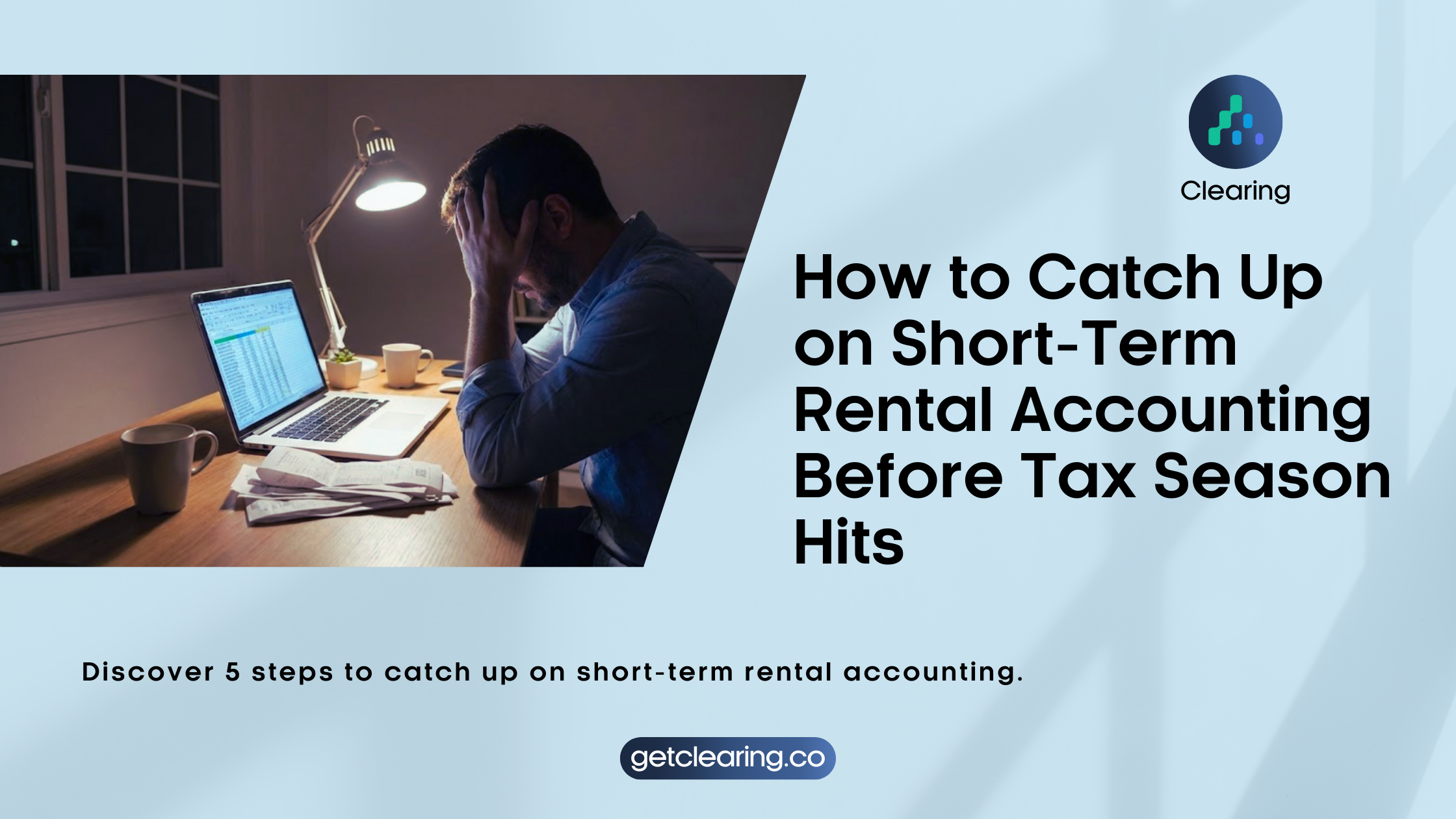
.png)
.png)
.png)
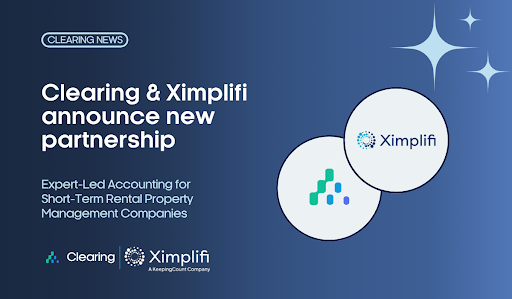
.png)
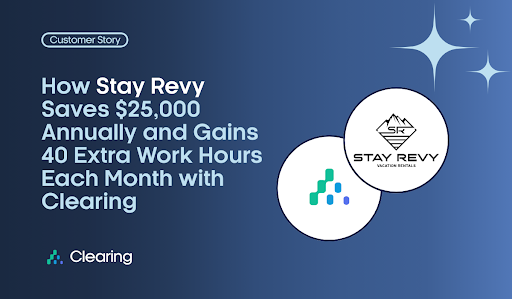
.png)
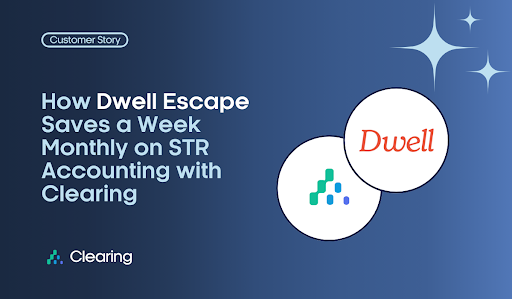
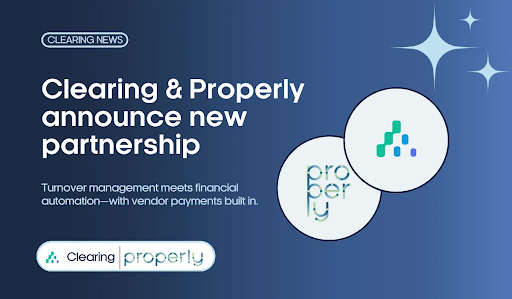
.png)
.png)
.png)
%20(1).png)
%20(1).png)
%20(1).png)
.png)
%20(2).png)
%20(1).png)
%20(1).png)
.png)

.png)
.png)
.png)
%20(1).png)
.png)
.png)
.png)
.png)
.png)
.png)
.png)
%20(1).png)
.png)
.png)
.png)
%20(1).png)
%20(1).png)
%20(1).png)








.jpg)
%20(1).png)
%20(1).png)
%20(2).png)
%20(1).png)

%20(1).png)
%20(1).png)
%20(1).png)



%20(1).png)
%20(1).png)
%20(1).png)
%20(1).png)
%20(1).png)


%20(1).png)
%20(1).png)
%20(1).png)
%20(2).png)
%20(2).png)



%20(2).png)


%20(2).png)
%20(1).png)
.png)


%20(2).png)
%20(2).png)

.png)
.png)
.png)



.png)

.png)
%20(1).png)
.png)

.png)